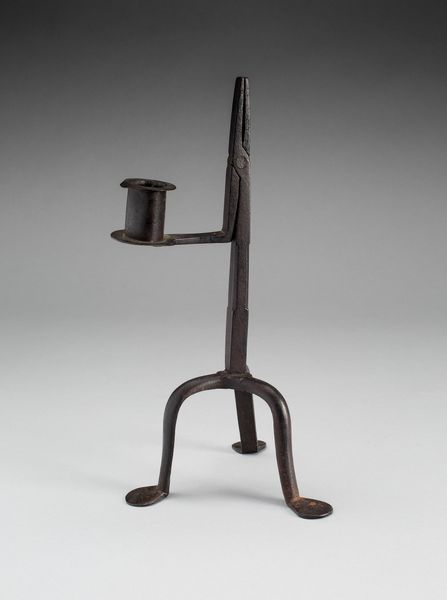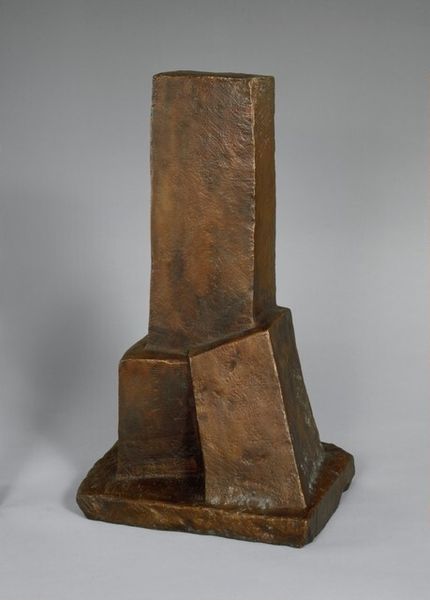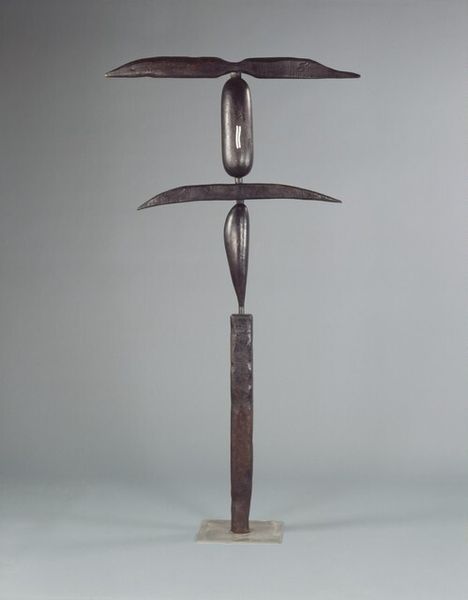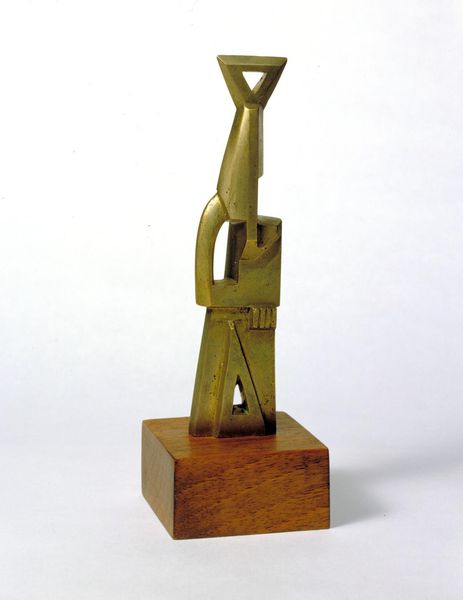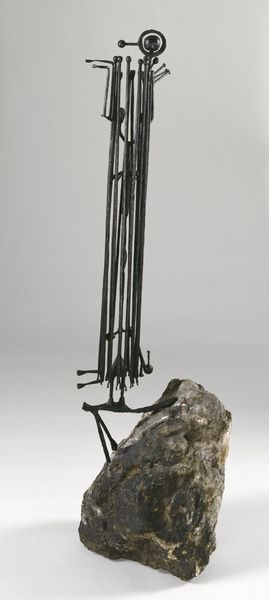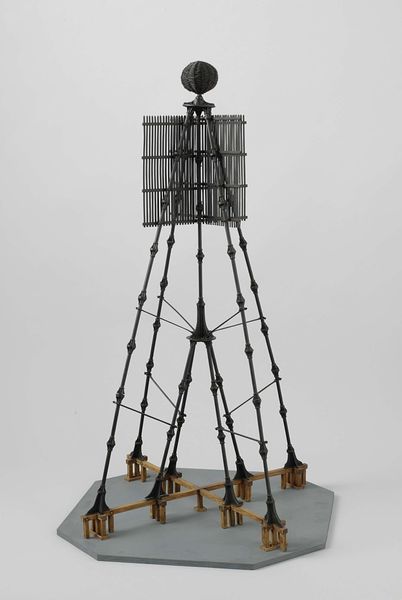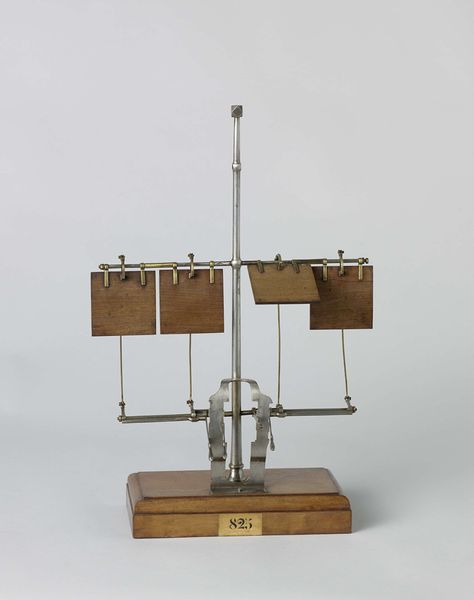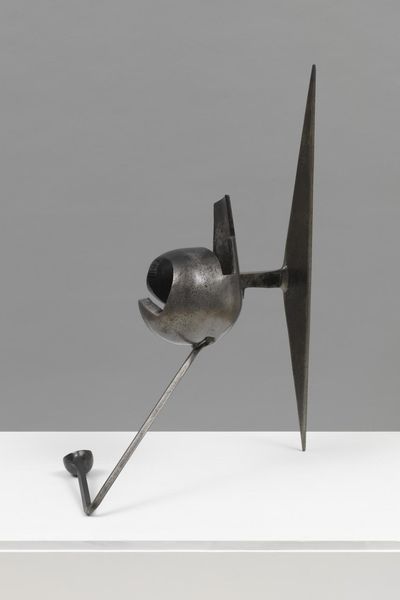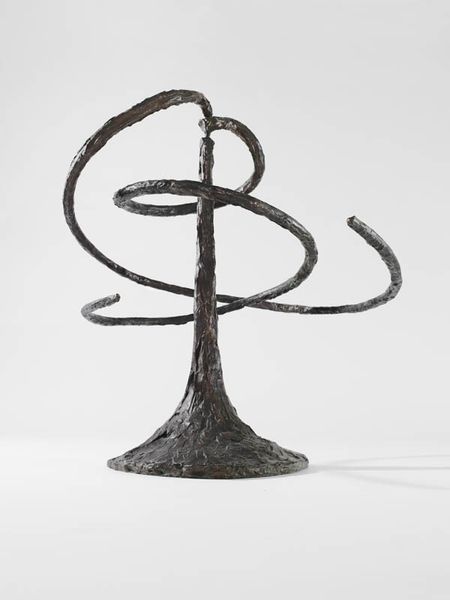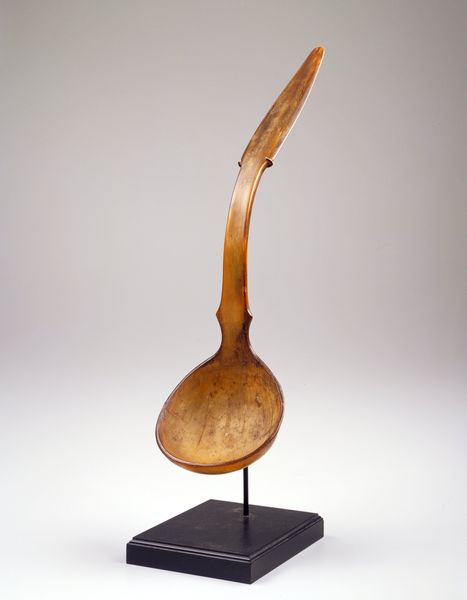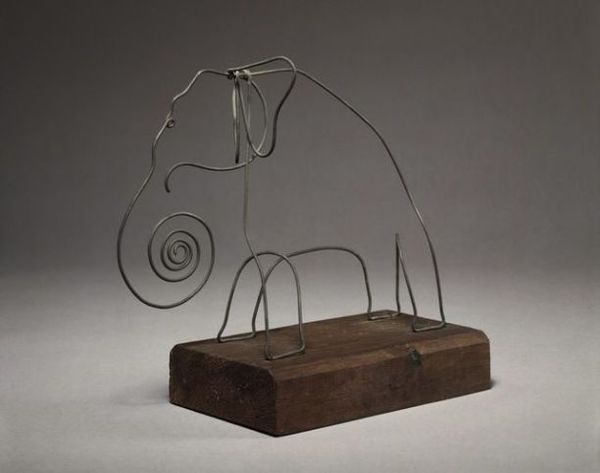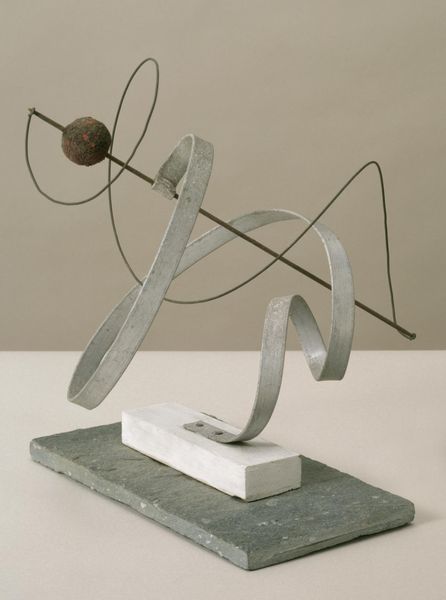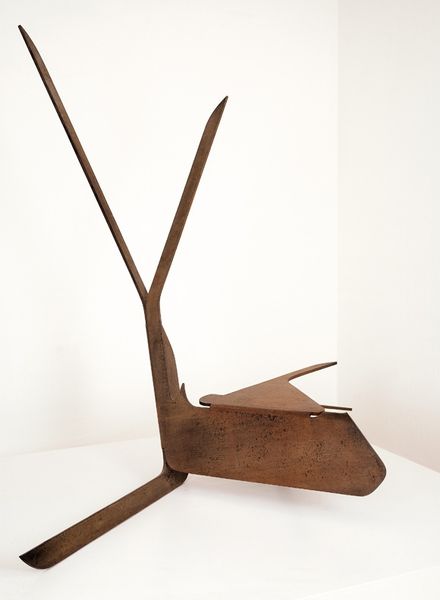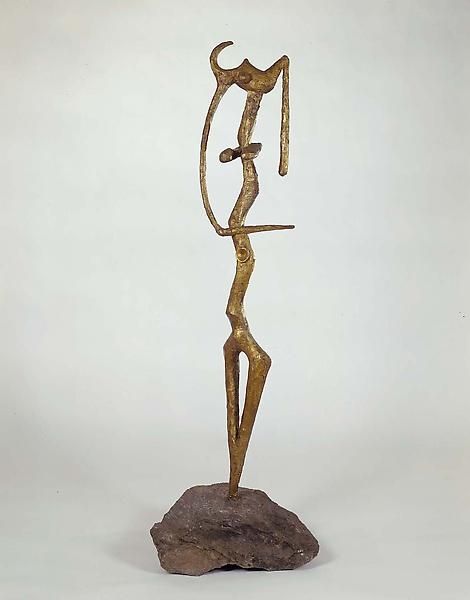
Dimensions: object: 189 x 86 x 63 mm
Copyright: © The estate of Reg Butler | CC-BY-NC-ND 4.0 DEED, Photo: Tate
Editor: Here we have Reg Butler's "Crouching Woman," a small, almost skeletal bronze figure. It feels incredibly vulnerable. What strikes you about this piece? Curator: The sculpture's starkness speaks volumes about post-war anxieties and the changing representations of the female form in art. Consider how the rough materiality and distorted figure challenged traditional, idealized sculptures. What kind of statements was Butler making about the society it was meant for? Editor: So it's less about beauty and more about reflecting a societal mood? Curator: Precisely. Butler captures a sense of unease, questioning conventional artistic and societal values through abstraction and his choice of materials. Editor: I hadn't considered the social commentary within it, that's fascinating! Curator: Understanding the context really unlocks the power of Butler's work.
Comments
Join the conversation
Join millions of artists and users on Artera today and experience the ultimate creative platform.
tate 8 months ago
⋮
Butler trained as a blacksmith from 1941-45 and began to make sculpture from forged and welded iron in 1948. He had spent the previous year working as an assistant to Henry Moore, and before 1941 had trained and practised as an architect. 'Crouching Woman' is number 11A in the artist's record books and it was made in the first year that he used his blacksmith's training and worked in forged iron. 'Maquette for Woman' is number 20 and was made as a tryout for a much larger figure in iron. The tiles on which the sculptures stand were also made by Butler, who had worked as a designer for the London Brick Company in the 1930s. Gallery label, August 2004
